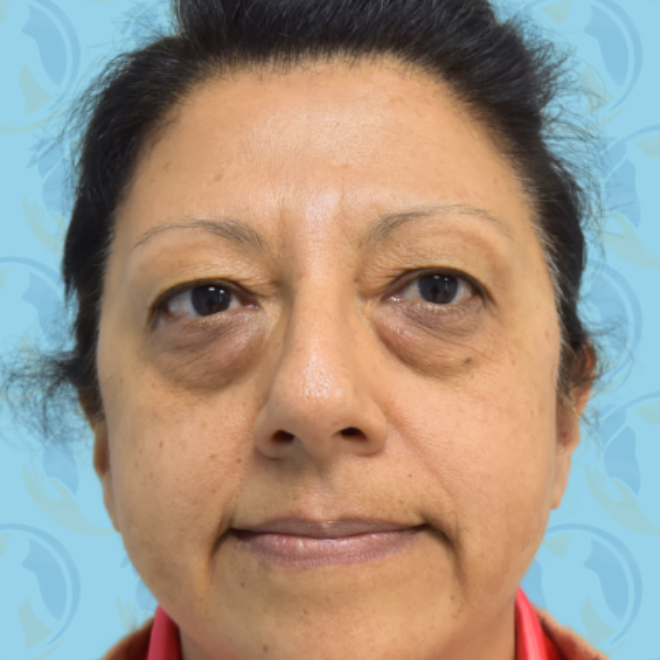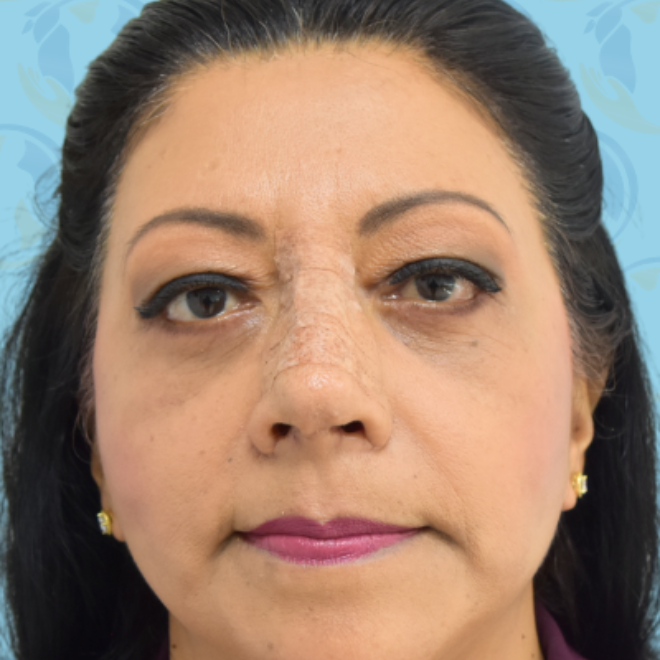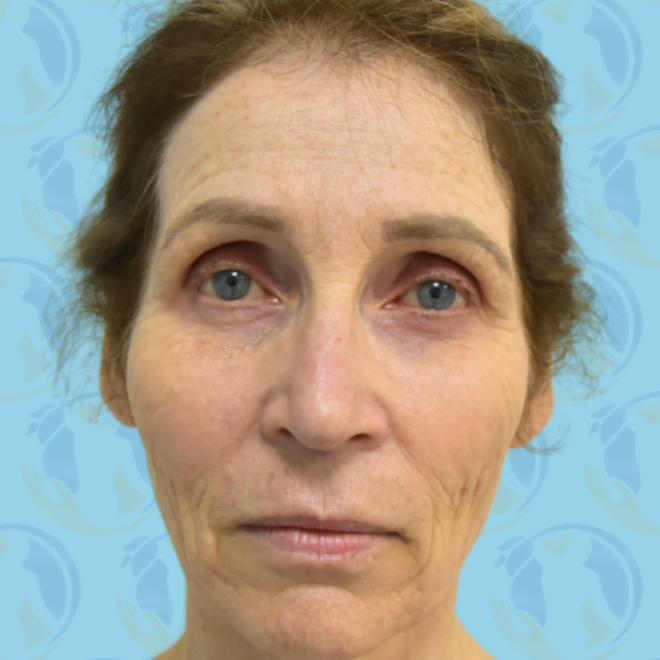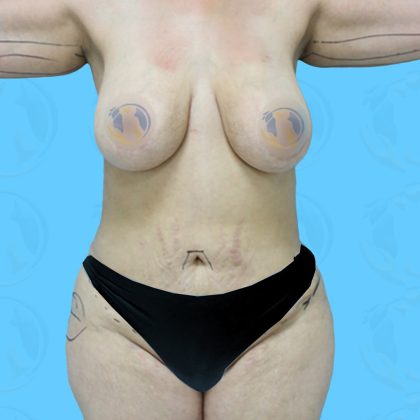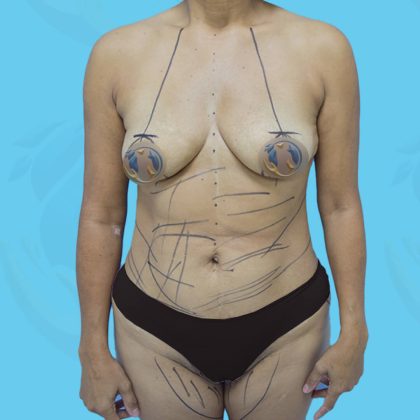Breast Lift
Conveniently located to serve the areas of Tijuana, Mexico

Mastopexy is a surgical procedure to raise and reshape sagging breasts for a time. If you are considering mastopexy, this section will give you a basic understanding of the procedure.
Before and After Photos
Contents
Considerations
Over the years, factors such as pregnancy, nursing, and the force of gravity take their toll on a woman’s breasts. As the skin loses its elasticity, the breasts often lose their shape and firmness and begin to sag.
Breast lift, or mastopexy, is a surgical procedure to raise and reshape sagging breasts — at least, for a time. (No surgery can permanently delay the effects of gravity.) Mastopexy can also reduce the size of the areola, the darker skin surrounding the nipple.
If your breasts are small or have lost volume — for example, after pregnancy — breast implants inserted in conjunction with mastopexy can increase both their firmness and their size. If you’re considering a breast lift, this information will give you a basic understanding of the procedure — when it can help, how it’s performed, and what results you can expect. It can’t answer all of your questions, since a lot depends on your individual circumstances. Please be sure to ask your doctor if there is anything about the procedure you don’t understand.
Ideal Candidates
A breast lift can enhance your appearance and your self-confidence, but it won’t necessarily change your looks to match your ideal, or cause other people to treat you differently. Before you decide to have surgery, think carefully about your expectations and discuss them with your surgeon.
The best candidates for mastopexy are healthy, emotionally-stable women who are realistic about what the surgery can accomplish. The best results are usually achieved in women with small, sagging breasts. Breasts of any size can be lifted, but the results may not last as long in heavy breasts.
Many women seek mastopexy because pregnancy and nursing have left them with stretched skin and less volume in their breasts. However, if you’re planning to have more children, it may be a good idea to postpone your breast lift. While there are no special risks that affect future pregnancies (for example, mastopexy usually doesn’t interfere with breast-feeding), pregnancy is likely to stretch your breasts again and offset the results of the procedure.
Risks
A breast lift is not a simple operation, but it’s normally safe when performed by a qualified plastic surgeon. Nevertheless, as with any surgery, there is always a possibility of complications or a reaction to the anesthesia. Bleeding and infection following a breast lift are uncommon, but they can cause scars to widen. You can reduce your risks by closely following your physician’s advice both before and after surgery.
Mastopexy does leave noticeable, permanent scars, although they’ll be covered by your bra or bathing suit. (Poor healing and wider scars are more common in smokers.) The procedure can also leave you with unevenly positioned nipples, or a permanent loss of feeling in your nipples or breasts.
Consultation
In your initial consultation, it’s important to discuss your expectations frankly with your surgeon, and to listen to his or her opinion. Every patient — and every physician, as well — has a different view of what is a desirable size and shape for breasts.
The surgeon will examine your breasts and measure them while you’re sitting or standing. He or she will discuss the variables that may affect the procedure — such as your age, the size and shape of your breasts, and the condition of your skin — and whether an implant is advisable. You should also discuss where the nipple and areola will be positioned; they’ll be moved higher during the procedure, and should be approximately even with the crease beneath your breast.
Your surgeon should describe the procedure in detail, explaining its risks and limitations and making sure you understand the scarring that will result. He or she should also explain the anesthesia to be used, the type of facility where the surgery will be performed, and the costs involved.
Don’t hesitate to ask your doctor any questions you may have, especially those regarding your expectations and concerns about the results.
Preparation
Depending on your age and family history, your surgeon may require you to have a mammogram (breast x-ray) before surgery. You’ll also get specific instructions on how to prepare for surgery, including guidelines on eating and drinking, smoking, and taking or avoiding certain vitamins and medications.
While you’re making preparations, be sure to arrange for someone to drive you home after your surgery and to help you out for a few days if needed.
Surgery Location
Your breast lift may be performed in a hospital, an outpatient surgery center, or a surgeon’s office-based facility. It’s usually done on an outpatient basis, for cost containment and convenience. If you’re admitted to the hospital as an inpatient, you can expect to stay one or two days.
Types of Anesthesia
Breast lifts are usually performed under general anesthesia, which means you’ll sleep through the operation. In selected patients — particularly when a smaller incision is being made — the surgeon may use local anesthesia, combined with a sedative to make you drowsy. You’ll be awake but relaxed, and will feel minimal discomfort.
Post-Procedure
After surgery, you’ll wear an elastic bandage or a surgical bra over gauze dressings. Your breasts will be bruised, swollen, and uncomfortable for a day or two, but the pain shouldn’t be severe. Any discomfort you do feel can be relieved with medications prescribed by your surgeon.
Within a few days, the bandages or surgical bra will be replaced by a soft support bra. You’ll need to wear this bra around the clock for three to four weeks, over a layer of gauze. The stitches will be removed after a week or two.
If your breast skin is very dry following surgery, you can apply a moisturizer several times a day. Be careful not to tug at your skin in the process, and keep the moisturizer away from the suture areas.
You can expect some loss of feeling in your nipples and breast skin, caused by the swelling after surgery. This numbness usually fades as the swelling subsides over the next six weeks or so. In some patients, however, it may last a year or more, and occasionally it may be permanent.
Getting Back to Normal
Healing is a gradual process. Although you may be up and about in a day or two, don’t plan on returning to work for a week or more, depending on how you feel. And avoid lifting anything over your head for three to four weeks. If you have any unusual symptoms, don’t hesitate to call your surgeon.
Your surgeon will give you detailed instructions for resuming your normal activities. You may be instructed to avoid sex for a week or more, and to avoid strenuous sports for about a month. After that, you can resume these activities slowly. If you become pregnant, the operation should not affect your ability to breast-feed, since your milk ducts and nipples will be left intact.
Your New Look
Your surgeon will make every effort to make your scars as inconspicuous as possible. Still, it’s important to remember that mastopexy scars are extensive and permanent. They often remain lumpy and red for months, then gradually become less obvious, sometimes eventually fading to thin white lines. Fortunately, the scars can usually be placed so that you can wear even low-cut tops.
You should also keep in mind that a breast lift won’t keep you firm forever—the effects of gravity, pregnancy, aging, and weight fluctuations will eventually take their toll again. Women who have implants along with their breast lift may find the results last longer.
Your satisfaction with a breast lift is likely to be greater if you understand the procedure thoroughly and if your expectations are realistic.
Contact
We’re only 2 minutes away from the US border, book now and save up to 60% on your procedure, (Compared to most US plastic cosmetic surgeons).






